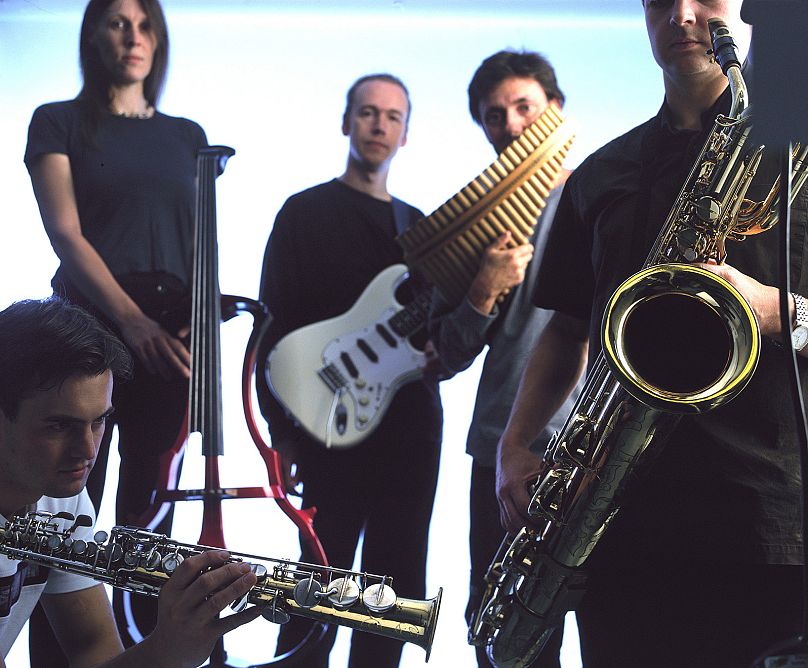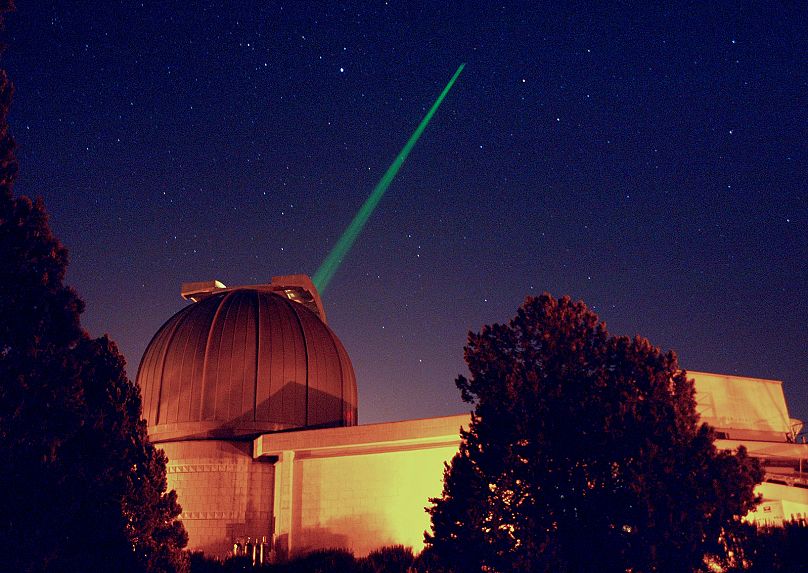The Apollo 11 moon landing was 50 years ago, but the images of humans walking on the powdery lunar surface, the earth rising behind them, are every bit as awe-inspiring today as they were in 1969. In Matera, the city in Southern Italy that’s the 2019 European Capital of Culture, this powerful moment will come to life with the Apollo Soundtrack, a multimedia performance in the evocative open-air space of Cava del Sole.
Matera is pulling out all the stops to put itself on the European cultural map this year, and the Apollo performance is just the sort of powerfully creative and immersive experience that locals and visitors have come to expect. The Apollo Soundtrack was originally written in 1983 by the master of ambience, Brian Eno, alongside his brother Roger Eno and Daniel Lanois. The music takes the idea we all have of the moon landings, based on grainy pictures and film, expanding it into a meditation on what it means to us that mankind has walked on the moon. The music adds a serene and weightless soundscape to the iconic pictures, speaking not just to the physical events of that day 50 years ago, but also to how the moon is a keystone for our aspirations and dreams.
The Matera performance will take place on 18th July, when Roger Eno performs the Apollo Soundtrack alongside the British 12-piece contemporary ensemble Icebreaker, steel guitarist BJ Cole, and Gyda Valtysdottir, the Icelandic cellist from the electronic experimentalist band Múm. "Many think science is different from artistic expression, but it's not like that," James Poke, co-founder of Icebreaker said to Ansa. “The same discipline, creativity and imagination are necessary [for both].”
The inclusion of steel guitar into the composition stems from the fact that each Apollo astronaut had been allowed to take a single cassette with them into space, and all but one of them chose country music. This is the source for Eno’s concept of “zero gravity country music”, which brings an element of fun to the otherwise minimal tracks. The steel guitar adds a soft, floating sound that still echoes the cold beauty of space.
Materans have their own connection to that out-of-this-world day in 1969, when Neil Armstrong and Buzz Aldrin took those unforgettable steps. Engineer Rocco Petrone, the son of migrants from the Basilicata region, supervised all of NASA’s launches and was the one to give the go-ahead to the Apollo launches - the performance will also be a homage to his contribution.
But as the 2019 European Capital of Culture, Matera is a city that prides itself not just in preserving its past, but also looking to the future. The Giuseppe Colombo Centre for Space Geodesy in Matera sends regular laser beams to the moon, where they reach reflectors that were placed there during the original Apollo missions and the Lunokhod Soviet robotic missions. These lasers measure the distance from the Earth to the moon, enabling further discovery within general relativity in physics, and knowledge of the moon’s internal structure. The Giuseppe Colombo Centre in Matera, founded in 1983 by the Italian Space Agency, also captures images of the earth from space which are an important source of information about the Earth’s vegetation, air pollution, groundwater, glacier erosion, biodiversity, and natural disasters.
Images of the original moon landing will be displayed during the Apollo Soundtrack performance in the Cava del Sole, alongside spectacular satellite images of the earth from Leonardo, the aerospace company sponsoring the event, courtesy of the Matera Space Centre. This centre, another of Matera’s space exploration assets, is run by e-GEOS, a geo-information joint venture between Telespazio (80%) and ASI (20%) that plays a vital role in acquiring and processing satellite images. These are used to monitor and protect the health of our planet and ultimately, improve the quality of people’s lives.
Even after 50 years, to see our planet from space remains a source of amazement and inspiration. Brian Eno still remembers watching the moon landings on TV when they happened: “I remember the eerie sensation of watching on [this] little black and white television, and then looking up at the moon and being absolutely shocked at the idea of what was happening there at that moment in time,” Eno said to The Guardian. “It was one of those strange moments when time closes up on you, and something that seems fictional and fantastic suddenly becomes real.” In Matera this summer, the Apollo Soundtrack will bring the legend back to life, capturing the excitement and awe of that unique moment and reminding us that the impossible can be achieved.



